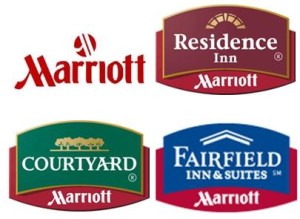House of Brands vs. Branded House
One of the big marketing decisions companies have to make is what type of house to build. A branded house or a house of brands are two approaches to designing brand architecture.
Branded House: McDonalds is the best example of fitting everything under the branded house approach. McChicken, McNuggets, McSalads. Everything gets tucked together into architecture that fits the same formula. It allows you to build and promote one house brand with lots of rooms. Another well known example is Apple and the iPod, iPad and iPhone where the portfolio of products connect with a small letter i preceding each word.
House of Brands: The other approach is best illustrated by Toyota. They have a house of brands like Toyota, Lexus and Scion that all represent different product offerings with clearly articulated positions. The University of Pennsylvania, my alma mater, is a house of brands with schools like The Annenberg School of Communications and The Wharton School. Each school is a unique and different brand within the The U of P family of schools. Proctor and Gamble has Tide, Crest, Pampers and a host of other unique brands to distinguish its offerings and each stands on its own.
How do you decide between these two ends of the brand spectrum?
· RESOURCES:It is often easier to build one brand than several. Do you have the resources to dedicate to a collection of individual brands?
· MARKET STRUCTURE: How is your current market organized? Where will either approach fit within the way things are organized today? Who will you compete with? What do they do? Is there an opportunity to stand out by doing something different than your competitors?
· POSITION IN THE MIND: Do you own a strong position in the mind of the consumer/trade? If so, it can be a mistake to believe that the equity of your brand will translate into a new product offering. I’m not a fan of diluting your effort. So if your brand stands for high quality, using it to build a value offering only works against your effort.
 One other option worth consideration is the endorser approach. In this case, you create distinctive brands but you use the corporate name as an endorser. So it could be Oreos by Nabisco or Ritz Crackers by Nabisco. Corporate endorser brands work when the parent name means something of power and importance in the category. Nabisco obviously stands for baked goods of quality so new brands can be leveraged by endorsement. Another example is Marriott. In their brand, they leverage the corporate endorser (Marriott) with each distinct sub brand within their good, better and best environment. In this example, Marriott, like Nabisco, has strong secondary meeting and the sub brand defines the level of quality.
One other option worth consideration is the endorser approach. In this case, you create distinctive brands but you use the corporate name as an endorser. So it could be Oreos by Nabisco or Ritz Crackers by Nabisco. Corporate endorser brands work when the parent name means something of power and importance in the category. Nabisco obviously stands for baked goods of quality so new brands can be leveraged by endorsement. Another example is Marriott. In their brand, they leverage the corporate endorser (Marriott) with each distinct sub brand within their good, better and best environment. In this example, Marriott, like Nabisco, has strong secondary meeting and the sub brand defines the level of quality. In my career, I have worked in both types of houses. I managed Slim Jims, Pemmican, David’s Sunflower Seeds, Penrose, Rough Cut and Andy Capp’s that all were part of a house of brands in a snack foods portfolio. Currently, I work for Nomacorc. Our corks are called Nomacorc and we also market other analytical tools like NomaSense (to measure oxygen in wine) or NomaSelector (software to choose the right closure for your wine). We use a branded house approach with Noma tying the products together. Building a brand starts with the architecture but ultimately you have to buy some furniture and fill out the space.
What brands live in your house?






